Craft Room Tips: Storing Handling Ribbons for Organization
Table of Contents []
- Storing Handling Ribbons
- Welcome to Plastic Card ID : Your Premier Source for Ribbon Storage and Handling Advice
- Understanding Your Ribbons: The Basics
- Best Practices for Ribbon Handling
- Long-term Storage Solutions
- Handling Ribbons During Printing
- When to Replace Your Ribbons
- Ordering and Replacing Ribbons
- Making the Most out of Your Printer and Ribbons
- Recap and How Plastic Card ID Can Help
- Call Plastic Card ID Today!
Storing Handling Ribbons
Welcome to Plastic Card ID : Your Premier Source for Ribbon Storage and Handling Advice

At Plastic Card ID , we understand that the smallest details can make the biggest difference. That's why we're committed to ensuring our clients get the most out of their card printer supplies. Storing and handling ribbons might seem straightforward, but doing it correctly is essential for maximizing both efficiency and longevity. Let's dive into some insider tips that will help you ace this task!
To start off, proper storage and handling of ribbons can prevent unnecessary wear and tear, saving you time and money. Think of ribbons as fine threads weaving the fabric of your business's professional image; keeping them in top condition is pivotal. So, whether you're a beginner or an experienced user, these tips from will transform the way you maintain your supplies. And remember, if you ever need a fresh stock or have any questions, just reach out to us at 800.835.7919 . We service clients nationwide with top-tier expertise.
Understanding Your Ribbons: The Basics
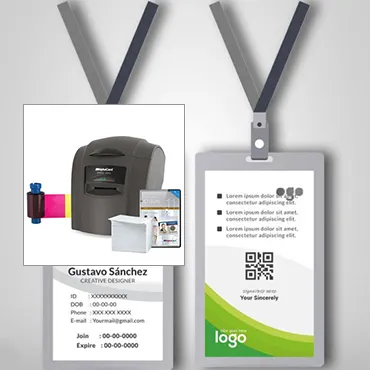
Before we get into the nitty-gritty of ribbon care, it's essential to have a basic understanding of what these ribbons are and how they contribute to your printing tasks. Printer ribbons come in a variety of types, each designed for specific tasks, and knowing the difference can help you care for them properly.
Ribbons are the lifeline of card printers. They add color, detail, and security features to your printed cards. Therefore, knowing how to store and handle them can keep your prints looking crisp and professional. Now let's look at some fundamental care guidelines that are often overlooked but can make a significant difference.
Identifying Different Types of Ribbons
Dye sublimation and thermal transfer ribbons are the most common types used in card printers. Dye sublimation is great for full-color printing, while thermal transfer is perfect for single-color printing on cards. Each type requires specific handling and storage techniques.
Knowing your ribbon type can greatly affect its care. For example, dye sublimation ribbons are sensitive to dust and environmental contaminants. Therefore, storing them in a clean area is crucial.
Optimal Storage Conditions
Temperature and humidity play a huge role in maintaining the quality of your ribbons. The ideal condition is a cool, dry place away from direct sunlight. This prevents the ribbon from sticking, fading, or becoming brittle over time.
Always store ribbons in their original packaging until they're ready for use. This protects them from dust and other elements that could compromise their integrity. A little effort in maintaining proper conditions can extend the ribbon's life significantly.
The Impact of Incorrect Storage
Incorrect storage can lead to a host of issues, including color shifts, reduced print quality, and even printer damage. Too much heat can make the ribbon brittle, while high humidity can cause it to stick to itself or the cards.
To avoid these pitfalls, always monitor the storage environment. Maintaining a consistent storage routine helps prevent problems before they begin and ensures that your prints are always of the highest quality.
Best Practices for Ribbon Handling
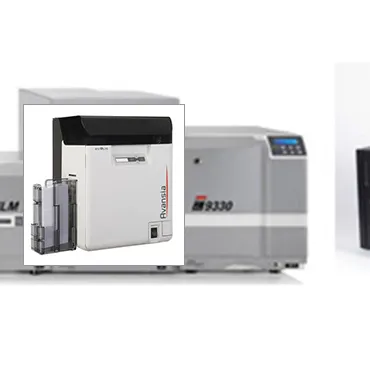
Handling ribbons may seem like a task that doesn't require much thought, but there's an art to it. Proper handling ensures that the ribbon is in perfect condition when it's time to print, resulting in flawless card production. Let's explore some handling techniques that will put you ahead of the curve.
Firstly, always handle ribbons with care. Oils and dirt from your hands can affect print quality. Wearing gloves can prevent direct contact and protect both the ribbon and the printed cards from potential contamination.
Load and Unload with Care
Loading and unloading printer ribbons must be done gently to prevent damage. Follow the printer manufacturer's instructions closely to avoid mishaps that could lead to costly downtime.
If you encounter resistance when inserting the ribbon, do not force it. Instead, double-check to ensure it's the correct ribbon type for your printer and that you're inserting it properly. Forcing a ribbon can damage both the ribbon and the printer itself.
Prevent Ribbon Contamination
Keep ribbons away from potential sources of contamination such as dust, food, and liquids. A contaminated ribbon can cause poor print quality and even harm the printer's print head.
Ensuring a clean workspace is integral to preventing contamination. Any particles or residue on the ribbon can drastically impact print quality. Sometimes, a single fingerprint can ruin an otherwise perfect print job.
Avoiding Ribbon Tears and Breaks
Ribbons are delicate and can tear easily if mishandled. Handle them gently to avoid stretching or tearing the material.
It's also worth noting that printers should be checked for any sharp edges or components that might snag or tear the ribbon during printing. Regular printer maintenance can help prevent such issues.
Long-term Storage Solutions
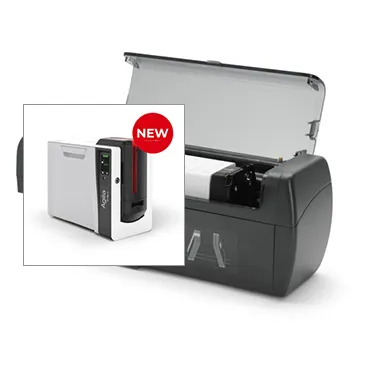
If you purchase ribbons in bulk or have a supply on hand, it's crucial to devise a long-term storage plan. How you store your ribbons can make a world of difference when you eventually use them. This section outlines some strategies for keeping your ribbons in pristine condition over extended periods.
Always keep your ribbons in their airtight, original packaging until you need to use them. This prevents exposure to harmful elements that could degrade the ribbon's quality over time. If you're gearing up for long-term storage, here are some guidelines.
Creating the Right Environment
Choose a storage area that's consistently cool and dry. Fluctuations in temperature and humidity can lead to condensation, which might damage the ribbons.
Consider using air-tight containers with desiccants to control moisture levels. This is particularly important in regions with high humidity. Even a small amount of moisture can affect how the ribbon adheres to cards during printing.
Categorize and Organize
Keep your ribbons organized by type and use date. Organizing them makes it easier to find what you need and use the oldest stock first.
Labeling your ribbons with their type and date of purchase helps prevent confusion and ensures that no ribbon goes to waste due to expiration or becoming obsolete.
Protect from External Threats
Ribbons can be susceptible to physical damage from dropping or bumping. Store them in a secure location where they won't be disturbed.
Avoid storing ribbons near chemicals or in areas where they could be exposed to fumes, as this could affect their composition and, consequently, print quality.
Handling Ribbons During Printing
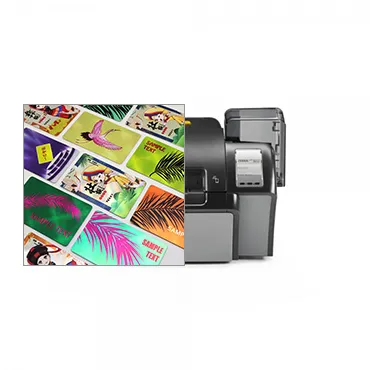
The real test of your storing and handling prowess comes when it's time to print. Proper handling during the printing process is just as important as storage. Here are some tips to ensure your ribbons contribute to a smooth printing process and yield exceptional results.
Remember to keep your printer clean and well-maintained; this isn't just about the ribbons. A clean printer means a clean printing path for your ribbons, which can greatly impact the quality of your output. Let's dive into this further.
Smooth Loading Procedures
Every printer model has specific loading instructions. Familiarize yourself with your printer's manual to load ribbons correctly and avoid damaging them.
Correct loading also ensures even print distribution across the ribbon, which results in consistent card quality. Misloading can lead to patchy prints or, worse, damaged printer heads.
Maintain a Clean Print Path
Before loading a new ribbon, check the print path for any debris or remnants of previous ribbons. This proactive step can prevent potential errors or damage.
Clean your printer according to the manufacturer's instructions regularly. This practice will keep both your printer and ribbons functioning optimally.
Monitor Ribbon Performance
Keep an eye on how the ribbon is performing during printing. If you notice any shifts in color or quality, it might be time to check your storage practices or the condition of the ribbon.
Staying vigilant and ready to address any issues immediately ensures your print jobs always run smoothly, resulting in less wastage and higher satisfaction with your printed products.
When to Replace Your Ribbons
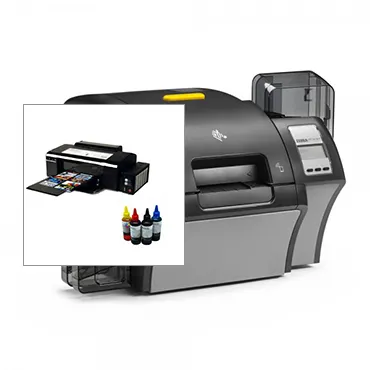
Knowing when to replace your ribbons is as important as knowing how to store and handle them. No matter how well you maintain your ribbons, they will wear out eventually. Keeping track of ribbon life can help you plan for replacements without interrupting your workflow.
There are a few signs that indicate a ribbon needs replacing. Blurry prints, color fading, or printer errors are strong indicators that it's time to switch out the old ribbon for a new one.
Signs of Wear and Tear
Obvious signs include ribbon tears or the printer ribbon being empty. But subtle signs such as less vibrant colors or more frequent printer errors can also point to wear and tear.
Always have a replacement ribbon ready to avoid downtime. This keeps your operations running smoothly and maintains the quality of your printed materials.
Tracking Ribbon Usage
Most printers have a counter for ribbon usage. Keep an eye on this and plan your ribbon orders accordingly.
Regularly assessing your print volume can help you predict when you'll need new ribbons. This prevents last-minute rushes and the potential for running out mid-job.
Quality Drops
If you start to notice consistent drops in print quality, even with proper handling and storage, it's likely time for a new ribbon.
Quality checks should be part of your regular printing routine. Assess print quality after each batch to detect any issues early on.
Ordering and Replacing Ribbons
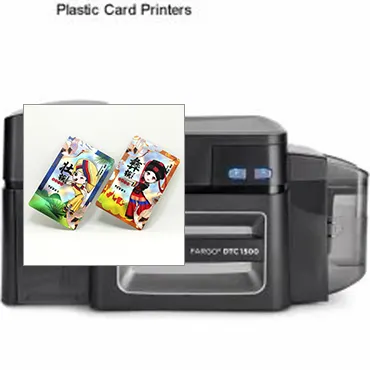
When it's time to order new ribbons, knowing your printer's requirements and the type of ribbons it supports is key. Ordering from Plastic Card ID ensures that you receive high-quality ribbons suited to your printer's specifications. And if you have any doubts or need to place an order, just ring us up at 800.835.7919 , and we'll make sure you're taken care of.
Proper inventory management of your ribbons can spare you the headache of unexpected shortages and keep your printing tasks on track.
Understanding Compatibility
Make sure you understand which ribbons are compatible with your printer model. Using the wrong type of ribbon can cause damage and poor print quality.
Our team can assist you in selecting the correct ribbons for your printer. Just reach out to us anytime you need guidance.
Estimating Your Needs
Estimate how many ribbons you'll need based on your printing volume. This helps you maintain a good supply without overstocking.
Setting up a regular order schedule with Plastic Card ID can prevent any disruptions in your printing routine. Plus, we'll make sure your ribbons are delivered right when you need them.
Easy Replacement Process
Our ribbons are designed for easy replacement, minimizing the effort required for changing ribbons and ensuring less downtime.
Follow the replacement instructions carefully, and if any issues arise during the process, our support team is just a call away to help resolve them.
Making the Most out of Your Printer and Ribbons
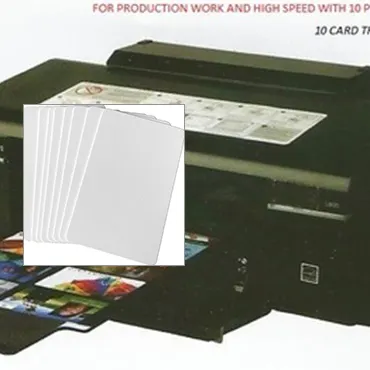
Maintaining your printer is just as crucial as caring for your ribbons. A well-maintained printer means less wear on the ribbons and better print results. Below are some tips to ensure your printer is in good health, complementing your ribbon care efforts.
Regular maintenance and cleaning are essential. Not only does it keep the printer running smoothly, but it also extends the life of your ribbons. Let's examine some ways to optimize the partnership between your printer and its ribbons.
Comprehensive Printer Care
Regularly clean your printer's rollers, print head, and other components to ensure that your ribbons have a clean surface to interact with.
Scheduled maintenance can reduce the chances of printer malfunctions, which can, in turn, damage the ribbons or affect print quality.
Adjusting Printer Settings
Fine-tune your printer settings to match the type of ribbon and card material you're using. This can drastically improve the print outcome.
If you're unsure about the best settings, consult the printer manual or reach out to for guidance.
Aligning Ribbons with Print Jobs
Match your ribbons with your printing needs. Some ribbons are better suited for high-definition photo printing, while others work best for text and graphics.
Choosing the right ribbon for the right job can enhance your printed cards' appearance and functionality.
Recap and How Plastic Card ID Can Help
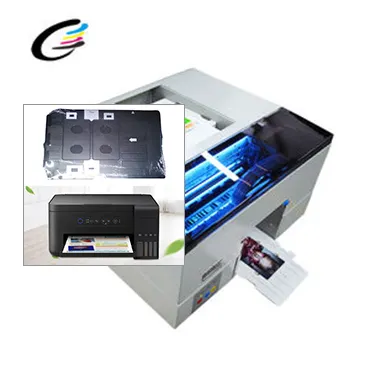
You should now have a solid understanding of the importance of handling and storing your ribbons properly. These tips will help you maintain the quality and longevity of your card printer supplies. Remember, good practices in storage and handling can save you time and money, and ensure every print is as good as the last.
is always here to help. Our team of experts can provide guidance and support whenever you need it. If it's time to restock or if you have any concerns, don't hesitate to reach out to us at 800.835.7919 .
Call Plastic Card ID Today!
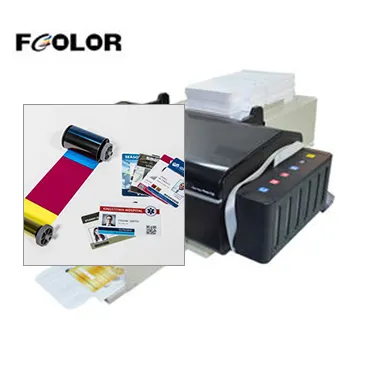
For more personalized advice or to order your next batch of high-quality ribbons, give Plastic Card ID a call at 800.835.7919 . Our friendly team is eager to assist you and ensure you're equipped with the best supplies to keep your printing operations running seamlessly. Reach out today and see why we're the trusted partner for businesses nationwide!
Previous Page

